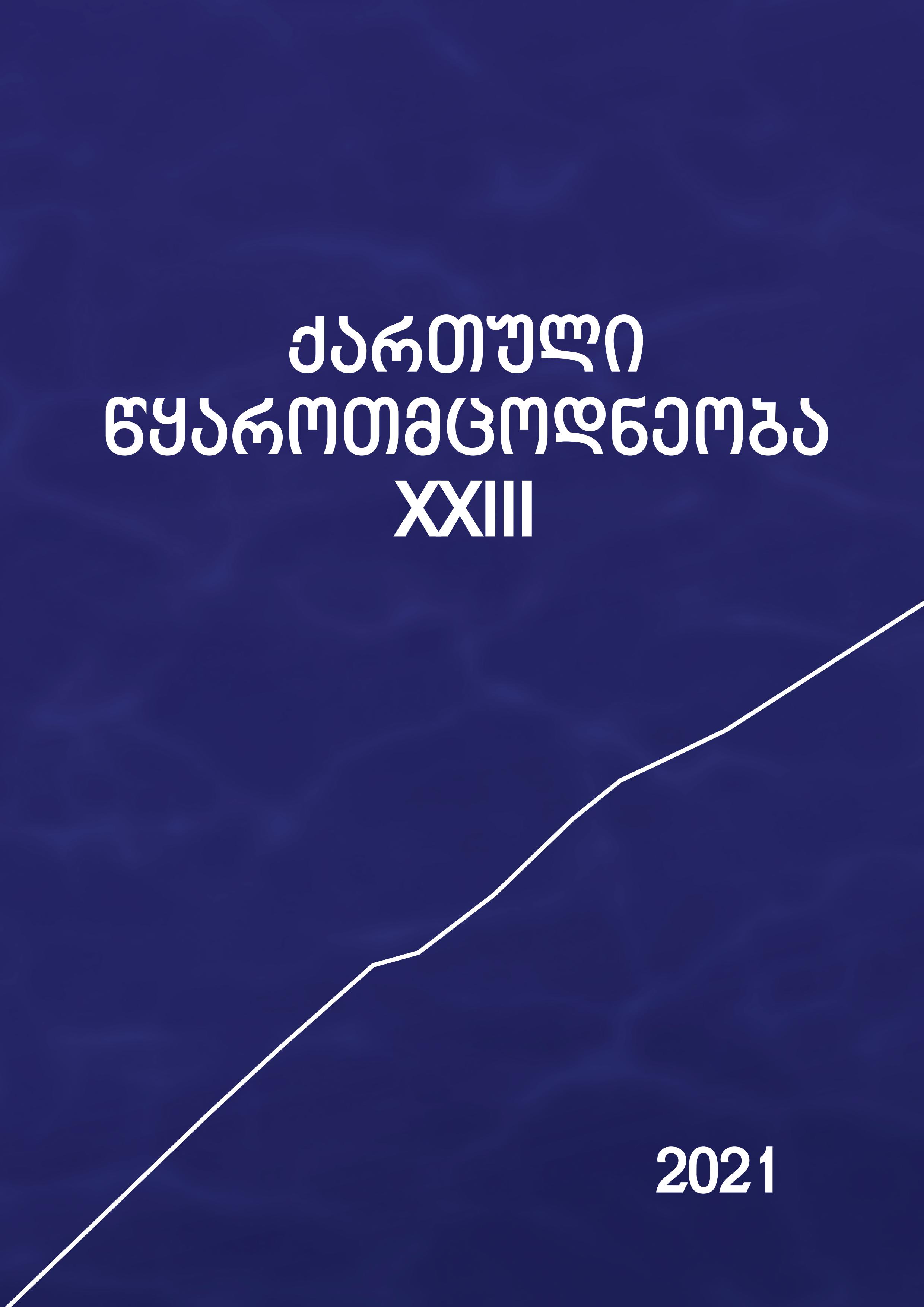On Two Greek Inscriptions from the “Kartli Mountain”
Keywords:
ორი ბერძნული წარწერაAbstract
In the personal archive of the eminent Georgian historian Guram Mamulia is available the unpublished paper devoted to study of two Greek inscriotions found in Mtskheta and the text containing discussion on interpretation of these inscriptions as historical sources. T. Ackalaia prepared both texts f or publication: the first one as paper and the second as appendix. The title of the paper, notese and references and also summaries belongs to him.
In 1993 and 1995 in the course of excavations at the Kartli “Mountain” (later Armaztsikhe), at Bagineti slope, two stone plaques with Greek inscriptions on them were unearthed, both of them are substantially similar in contents and were attached to the wall of the roman type bath-building.
The purpose of this research paper is the analisys of the social institutions of τροφεὺς and τρόφιμη attested in the inscriptions.
The inscription no. 1 says that Anagranes, who was the τροφεὺς and ἐπίτροπος of the Iberian king, dedicated bath-building made with his own resources to the daughter of the family of Vologaeses of Armenia, who was the queen of Iberia and the wife of Great Amazaspus, King of Iberians. Inscription no. 2 attests the name of the queen of Iberia (Kartli) – Drakonti and additionally it informs us that the wife of the τροφεὺς Anagranes (her name remains unknown), as being τρόφιμη, made the same gift to queen Drakonti.
In this case, the social terminology attested in the inscriptions are of the significant attention. Anagranes bears the title τροφεὺς and ἐπίτροπος of the King Amazaspus on the inscription no. 1, while inscription no.2 provides one more social institution of τρόφιμη.
In Greek, τροφεὺς referes to the male nurturer, i.e. he who feeds, and τρόφιμη – female nurturer, i.e. she who feeds. Despite the fact that τροφεὺς and τρόφιμη are not attested in the Septuagint, however, their synonymous terms – τρόφος and τίJηνος are confirmed there. In old Georgian translations of the Bible, „მძუძე“ [mȝuȝe] – nurture (Isaia 49.23), „მამამძუძე“ [mamamȝuȝe] – foster-father (IV Kings, 10.1; 10.5) and „დედამძუძე“ [dedamȝuȝe] – foster-mother (IV Kings, 11.2) are corresponding to them. So, there is no doubt that Anagranes and his wife were the “მამამძუძე”-mamamȝuȝe -(foster-father") and „დედამძუძე“-dedamȝuȝe-(foster-mother) of King Amazaspus of Iberia (c. 60s of 3rd century AD) respectively.
In addition, while the institution of ἐπίτροπος is attested at the Iberian royal court (2nd century AD) in the Greek inscription of the Armazi bilingua, the institute of the τρόφος||τρόφιμη first appeared in the above inscriptions. Consequently, Bagineti inscriptions provide valuable control material about the structure of the royal court of Iberia, as they directly confirm the accuracy of the Georgian historical tradition (Leonti Mroveli, Juansheri, "Conversion of Kartli") regarding the existence of the social institution of "fosterage" („მამამძუძე“-mamamȝuȝe) in ancient Kartli (Iberia).
According to the Armazi bilingua (2nd century AD), Iberian King Kseparnug had the ἐπίτροπος (Steward) // ეზოჲსმოძღვარი-ezoys moȝγvari (Head of court) Iodmangan, who in the Aramaic text is referred to as the rb trbṣ (Head of the palace). For his part, Iodmangan’s father, Puplikios Agrippa, is the "rab tarbaṣu" and Vitaxe of the king Parsman. In the newly discovered inscription no. 1, the ἐπίτροπος (steward) is the foster-father (τρόφος – mamamȝuȝe). According to the Armazi bilingua and the newly discovered Greek inscriptions, the Iberian kings – Parsman, Kseparnug and Amazaspus had foster-fathers („მამამძუძე“-mamamȝuȝe) – Puplikius Agrippa, Iodmangan and Anagranes. Accordingly, Puplikius Agrippa, Iodmangan and Anagranes, as the “foster-fathers” of kings of Kartli, belonged to the one and the same noble house. Consequently, the wife of Anagranes, as the queen of the foster-father’s house, was the foster-mother (“დედამძუძე”-dedamȝuȝe // τρόφιμη) of Drakonti – the Queen of Kartli.
Strabo's evidences that the commander-in-chief was the δεύτερος (the second) of Iberian king, confirms the accuracy of the Georgian historical tradition (Leonti Mroveli, Juansheri) that King’s „სპასპეტი”-spaspeti (commander-in-chief) was the second person after the king („შემდგომი“ šemdgomi), or vice-king. The fosterage (mamamȝuȝe) of the šemdgomi and of the Commander-in-Chief (სპასპეტი-spaspeti) is confirmed by the newly discovered inscriptions at Bagineti, where τροφεὺς (foster-father) is ἐπίτροπος (steward) as well. Accordingly, Puplikios Agrippa, Iodmangan and Anagranes belonged to the one and the same noble family, and as the "foster-fathers” of the kings of Kartli, they were „შემდგომი“(šemdgomi)-δεύτερος of the king, spaspeti (commander-in-chief), "ezoys moȝγvari" (ἐπίτροπος - rab tarbaṣu), and as outstanding and great dukes, they were also called as Vitaxe (“პიტიახში”-pitiaxši).
Downloads
Published
Issue
Section
License

This work is licensed under a Creative Commons Attribution-NonCommercial 4.0 International License.

